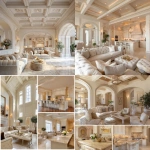Explore the Best AI Image Gallery

The Intersection of AI-Generated Images and Contemporary Art
The emergence of Artificial Intelligence (AI) has dramatically shifted many landscapes, and the world of art is no exception. AI-generated images are making headlines, challenging our traditional understanding of creativity and authorship in the art realm. Artists, designers, and technologists are leveraging these advanced algorithms to push creative boundaries, creating visually stunning images that evoke emotion and thought, while simultaneously raising important ethical and philosophical questions.
Understanding AI-Generated Images
AI-generated images refer to visuals that are created with the help of sophisticated algorithms and neural networks. Unlike traditional art forms, where an artist's hand and live experience are paramount, AI uses vast datasets to produce artwork. These AI systems, such as Generative Adversarial Networks (GANs), learn from existing artwork, styles, and cultural data, and generate new images based on that training.
Impact on the Creative Industry
The integration of AI in art has significantly impacted the creative industry in several ways:
- Collaboration Between Technology and Artists: Artists are utilizing AI not as a replacement but as a collaborative tool. For example, the renowned artist Refik Anadol blends AI with data aesthetics to create immersive installations that transform entire spaces. This interplay of human creativity and machine learning is fostering innovative movements in art.
- Accessibility to Creation: AI tools allow non-artists to engage with artistic creation. Platforms like DeepArt and Artbreeder enable users to generate art simply by inputting parameters, opening the doors for broader public participation in art.
- New Aesthetic Directions: AI-generated images often produce unexpected and unique styles, serving as a source of inspiration for human artists. For instance, works by the AI artist AICAN have been exhibited in galleries, showcasing how algorithmically generated art can challenge aesthetic norms and conventions.
Potential Uses of AI-Generated Art
The potential applications for AI-generated art are vast and varied:
- Commercial Use: Brands are increasingly exploring AI-generated art for advertising campaigns, product designs, and branding. This enables companies to personalize imagery based on customer preferences and market trends.
- Entertainment and Media: In the gaming and film industries, AI is being utilized to create rich visual backgrounds and characters, enhancing the audience's experience. AI-generated visuals offer unique storytelling possibilities, blending the boundary between reality and fiction.
- Art Curation and Restoration: AI algorithms can assist in curating art exhibitions by analyzing collections and recommending pieces that complement one another. With restoration, AI can recreate missing sections of damaged art or generate new interpretations based on historical context.
Ethical Considerations
As the role of AI in art grows, it prompts significant ethical discussions:
- Copyright and Ownership: A key question arises: who owns AI-generated images? Is it the programmer, the user, or the AI itself? Legal frameworks concerning copyright will need to evolve to accommodate these new realities.
- Authenticity and Value: The uniqueness of art often relies on the artist's experience and emotional journey. As AI creates art that lacks human touch, debates about the value of such pieces emerge. Can we still consider AI-generated images as “art” in the traditional sense?
- Socioeconomic Impacts: The rise of AI-generated art might have socioeconomic repercussions on traditional artists. As tools become more accessible, the flood of generated images raises concerns about market saturation and potential devaluation of artistic skills.
The Future of AI in Art
The future of AI-generated images in art is equally promising and uncertain. As technology continues to advance, we can expect:
- Enhanced Interactivity: Future developments may enable more interactive and responsive AI art experiences, allowing viewers to engage with artwork in real-time, altering it through their decisions.
- Greater Personalization: AI could fully personalize artwork based on individual preferences, creating a unique visual experience for each person. Imagine an art piece that evolves based on your reactions and emotions!
- Interdisciplinary Collaborations: The merging of various fields such as architecture, fashion, and technology with AI art will foster unprecedented forms of expression and innovation.
Conclusion
The rise of AI-generated images is undeniably reshaping the landscape of contemporary art. It opens up new avenues for creativity, allows wider participation in art-making, and poses important ethical questions. As we navigate this evolving intersection between artificial intelligence and human creativity, it is crucial to balance technological innovation with the integrity of artistic expression. The future holds exciting possibilities, and it is up to us—artists, technologists, and society—to shape how we integrate these powerful tools into our cultural narrative.
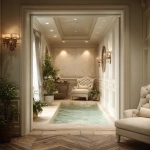

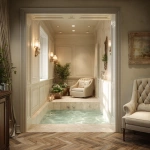
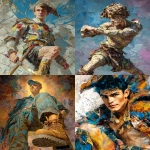
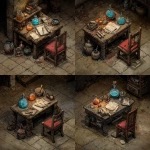
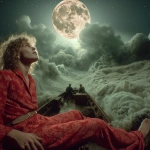

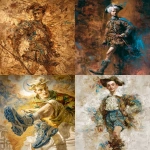
](https://images.ai-img.art/thumbnails/150/3a60737a5b67fa252207ad1ae6db245a26284f53fb5846996bb34515b39ff269.webp)
](https://images.ai-img.art/thumbnails/150/8c3bd422d50d35735d8fb33bd314a79e30e5b150129d5d09bdad822a2007593f.webp)
](https://images.ai-img.art/thumbnails/150/1614d64dd7156c95db952258978be809eb3db8cea4453fec69c49cbdfe63fa94.webp)
